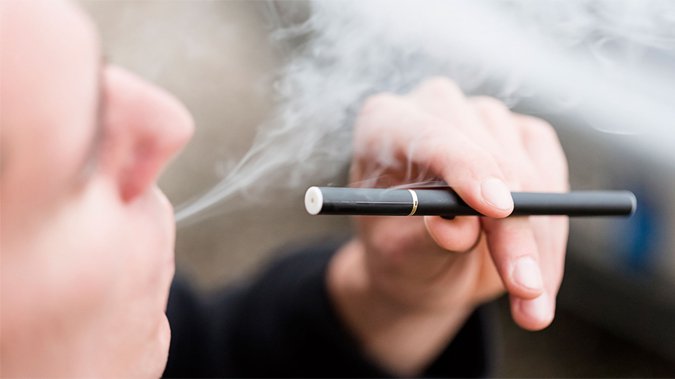
Vaping, the act of inhaling and exhaling vapor produced by an electronic cigarette or similar device, has gained significant popularity in recent years. However, it has also been accompanied by a myriad of misconceptions and misinformation. In this blog post, we will delve into the most prevalent myths surrounding vaping and provide evidence-based insights to debunk them. By separating fact from fiction, we aim to offer a clearer understanding of this controversial practice.
In the realm of vaping, one name that stands out is Dr. Dabber. Known for their high-quality vaporizers, Dr. Dabber has become synonymous with innovation and excellence in this industry. Their range of vaporizers is designed to provide a premium vaping experience while prioritizing safety and efficiency.
Dr. Dabber’s commitment to safety is evident in their attention to detail. Their vaporizers undergo rigorous quality control processes to ensure they meet industry standards and provide users with a safe experience. Additionally, their devices are designed with user-friendly features, making them accessible to both novice and experienced vapers.
Myth #1: Vaping is Equally Harmful as Smoking Cigarettes

One of the most pervasive misconceptions is the belief that vaping is just as harmful as smoking traditional cigarettes. However, research has consistently shown that vaping is a less harmful alternative to nicotine consumption. While both activities involve inhaling substances into the lungs, vaping does not involve the combustion of tobacco, which is the primary source of the harmful chemicals found in cigarette smoke. Numerous studies comparing the toxicological profiles of cigarettes and e-cigarettes have demonstrated that vaping significantly reduces exposure to harmful substances and the associated health risks.
Myth #2: Vaping Leads to Popcorn Lung Disease
The notion that vaping causes popcorn lung disease, scientifically known as bronchiolitis obliterans, has circulated widely. However, this misconception stems from a misinterpretation of the facts. Diacetyl, a flavoring compound linked to popcorn lung disease, was indeed found in some early e-liquids. However, reputable manufacturers have long since eliminated diacetyl from their products. The levels of this compound in e-liquids today are negligible and pose no significant risk to vapers.
Myth #3: Vaping is a Gateway to Smoking

Concerns have been raised that vaping acts as a gateway for non-smokers, particularly adolescents, to transition into smoking traditional cigarettes. However, extensive research has failed to establish a causal link between vaping and subsequent cigarette smoking initiation. In fact, studies have shown that the majority of young people who try vaping are already smokers or have experimented with other substances. Vaping, when properly regulated and targeted at adult smokers seeking a less harmful alternative, has the potential to reduce smoking rates rather than increase them.
Myth #4: Secondhand Vapor is as Harmful as Secondhand Smoke
Comparing secondhand vapor to secondhand smoke is akin to comparing apples to oranges. Secondhand smoke is well-documented to contain a cocktail of toxic chemicals that pose serious health risks. On the other hand, the aerosol produced by e-cigarettes contains significantly fewer harmful substances, and the levels of those substances are usually well below occupational safety limits. While further research is still needed to fully understand the long-term effects of secondhand vapor exposure, current evidence suggests that it presents minimal risk to bystanders.
Myth #5: All E-liquids Contain Dangerous Chemicals
Contrary to popular belief, not all e-liquids contain dangerous chemicals. Reputable manufacturers adhere to stringent quality control measures to ensure the safety of their products. While it is true that some cheaper or illicitly produced e-liquids may contain harmful substances, these are outliers and should not be considered representative of the industry as a whole. Consumers can safeguard their health by purchasing e-liquids from trusted sources that adhere to strict manufacturing standards.
Myth #6: Vaping Causes Explosions and Fires

The sensationalized stories of e-cigarette explosions and fires have given rise to the misconception that vaping is inherently dangerous. However, such incidents are rare and usually occur due to user error or the use of unauthorized modifications. Responsible vapers who follow proper battery safety guidelines and use devices from reputable manufacturers face minimal risks of experiencing explosions or fires. It is crucial to educate oneself on battery safety and use devices as intended to mitigate any potential risks associated with vaping.
Myth #7: Vaping is Only Popular Among Teenagers
While it is true that vaping has gained popularity among teenagers, it is incorrect to assume that it is solely a practice embraced by this age group. It appeals to a diverse range of individuals, including adult smokers who are looking for a less harmful alternative to traditional cigarettes. In fact, a significant portion of the vaping community consists of adults who have successfully used e-cigarettes as a means to quit smoking. The misconception that vaping is exclusively popular among teenagers disregards the diverse demographics that find value in this alternative nicotine delivery method.
Myth #8: Vaping Does Not Help Smokers Quit Smoking

A prevailing myth surrounding vaping is that it is ineffective as a smoking cessation tool. However, a growing body of evidence suggests the contrary. Research studies have consistently shown that e-cigarettes can be an effective aid for smokers who wish to quit. A notable study conducted by the University of Louisville found that smokers who used e-cigarettes had a higher quit rate compared to those who used traditional nicotine replacement therapies, such as patches or gum. While more research is needed to fully understand the long-term effects of vaping as a cessation tool, it is clear that it holds promise in helping individuals break free from the grips of tobacco addiction.
Conclusion: Dispelling Misconceptions and Understanding the Facts
In conclusion, it is vital to debunk the common myths surrounding vaping to foster a better understanding of this practice. By dispelling these misconceptions and understanding the facts, we can engage in informed discussions about vaping and make decisions based on accurate information. It is crucial to continue researching and monitoring the long-term effects of vaping, but it is equally important not to let unfounded myths overshadow the potential benefits that e-cigarettes can offer as a harm-reduction tool. As the landscape of vaping evolves, it is essential to approach the topic with an open mind, relying on evidence-based research to guide our understanding.








